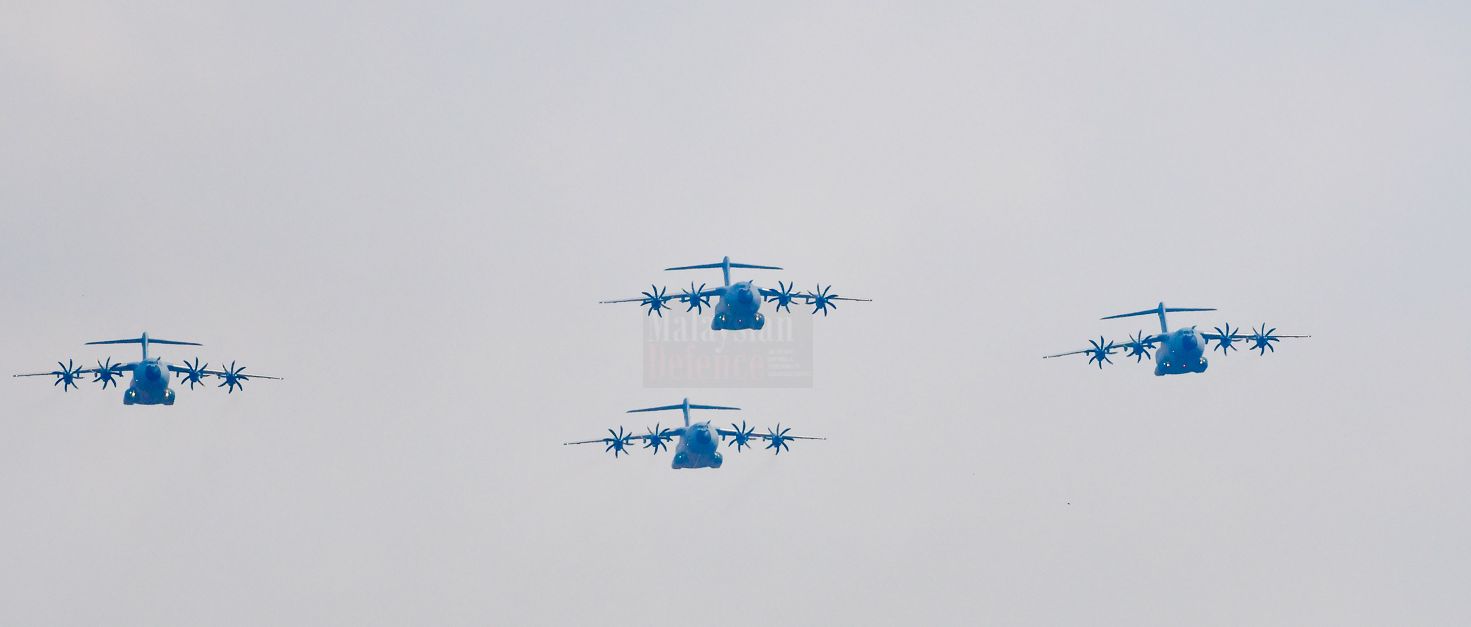
SHAH ALAM: Royal Thai Air Force (RTAF) has taken delivery of another batch of Airbus H135 light helicopters to be used for flight training. The delivery of the new helicopters was announced by Airbus today (July 7, 2022).
Release from Airbus
Airbus Helicopters has handed over the second batch of H135 military training helicopters to the Royal Thai Air Force (RTAF) in a ceremony held at its Wing 2 base in Lopburi, Thailand. The latest deliveries saw RTAF receiving all six H135 helicopters, becoming the first in Southeast Asia to utilise the H135 for military training.
RTAF selected a fleet of next-generation military training helicopters in February 2020, as part of its pilot training enhancement programme. Augmenting its current fleet of H225M helicopters, the new H135s will be dedicated for various training missions, including ab-initio training.
“We take pride in delivering this first batch of high performance H135s to RTAF, with absolute confidence that these helicopters will form an integral part of a world-class training platform for the air force,” said Pierre Andre, Head of Airbus in Thailand.
“The H135 is globally regarded as a proven and reliable military training aircraft, and has supported instructors across continents in delivering training missions precisely and safely. We are happy that Thailand now joins ten other military operators across the globe, underscoring the H135 as the aircraft of choice for military pilot training,” added Pierre Andre.
RTAF’s H135s are each configured with two external cameras, providing pilots with an unblocked 360-degree view of the external environment. A suite of tactical systems and the Euronav7 moving map are installed onto the helicopters for enhanced situational awareness, at the same time offering the highest levels of functionality, interface capability, and flexibility to meet the air force’s rigorous missions. For enhanced crew comfort, the aircraft are fitted with conditioning systems, tinted windows and height-adjustable pilot seats.
RTAF’s H135 fleet is covered by Airbus’ highly adaptive HCare Smart full-by-the-hour support, and continuing airworthiness management organisation digital services. As part of a customised support programme, a dedicated Technical Representative will be attached to RTAF’s operations for an initial two-year period to ensure the fleet’s high availability. Airbus will also deliver a Helionix advanced tool simulator to support RTAF’s ab-initio missions.
With over 130 units operated by military agencies worldwide for training missions, the three-tonne-class H135 is a benchmark for training helicopters globally, having already achieved more than 400,000 military training flight hours. Well-equipped with the most advanced technologies available, including Airbus’ state-off-the-art Helionix avionics suite, the light twin-engine H135 offers optimal safety conditions for basic and advanced mission training, while providing a platform for easy and safe pilot transition to more advanced helicopters.
— Malaysian Defence
If you like this post, buy me an espresso. Paypal Payment




The army should be asking for the ex-Afghani Blackhawks and MD530F
https://www.thedrive.com/the-war-zone/43461/dozens-of-afghan-helicopters-have-now-been-delivered-to-the-u-s-air-forces-boneyard
The problem is we are on the back of the queue at the moment after M190 debacle
Hasnan,
Never mind what’s on paper but irst ask if the army really wants MD530Fs and whether it has other priorities at the moment.
Any news on that ATGM tender yet ?
Yes, the Metis won it but it had lapsed as the Finance Ministry had not approved the procurement. The sanctions on Russia is just another excuse to stop it altogether. It is likely the Army will buy the Omtas from Roketsan
@Azlan
The army needed utility and training helos….again limited by budget. Just hope we don’t get very expensive leased aw139 and leased training helicopters.
Hasnan,
Yes I’m aware the army needs a Nuri replacement but I doubt it has a requirement for MD530Fs and I also question if it should get a utility type which shares no commonality with what the RMAF operates. Not only are procurement funds limited but the army also has a very modest or constrained ground support infrastructure.